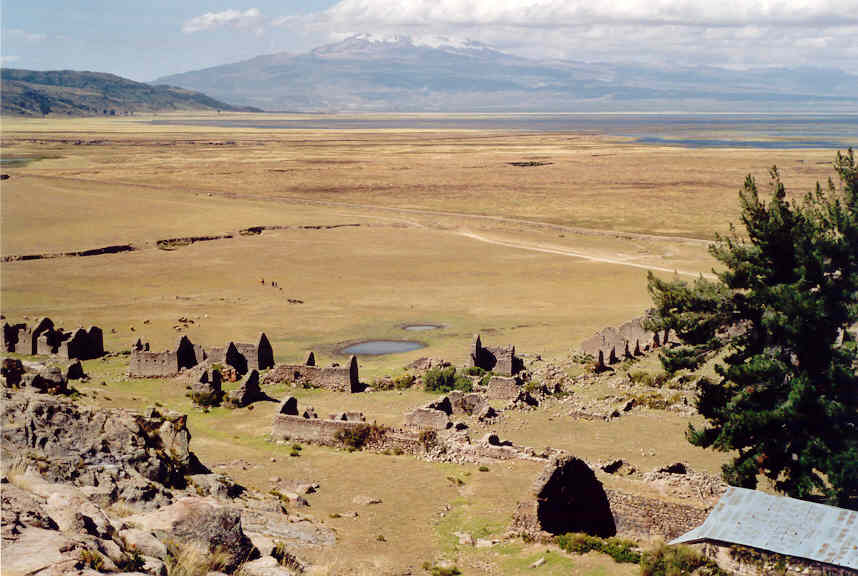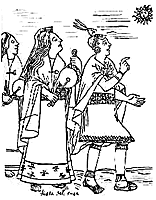|
Inka Wasi, Ayacucho
Inka Wasi or Inkawasi (Quechua ''inka'' Inca, ''wasi'' house, "Inca house", Hispanicized spelling ''Incahuasi'') is an archaeological site in Peru. It is located in the Ayacucho Region, Parinacochas Province, Pullo District.ofi.mef.gob.pe - 3 - Ministerio de Economía y Finanzas (in Spanish) See also * Parinaqucha * Sara Sara Sara Sara is a volcano lying between Lake Parinacochas and the Ocoña River in Peru. It is situated in the Parinacochas Province and the Paucar del Sara Sara Province. The volcano formed during the Pleistocene during four different stages of ... References {{DEFAULTSORT:Inka Wasi, Ayacucho Archaeological sites in Peru Archaeological sites in Ayacucho Region Inca ... [...More Info...] [...Related Items...] OR: [Wikipedia] [Google] [Baidu] |
Sara Sara
Sara Sara is a volcano lying between Lake Parinacochas and the Ocoña River in Peru. It is situated in the Parinacochas Province and the Paucar del Sara Sara Province. The volcano formed during the Pleistocene during four different stages of volcanic activity, which constructed a volcanic edifice with an oval outline consisting of lava flows and lava domes. The volcano was glaciated during the Last Glacial Maximum, last glacial maximum; it may still feature glaciers. The last eruption was about 14,000 years ago and future eruptions are possible. The volcano was worshipped by the local population, and an Inca Empire, Inca mummy of a 15-year old girl was found on the summit by archaeologists. Geography and geomorphology Sara Sara lies within the sub-range of the Andes. Administratively, it is located in the Parinacochas Province, Parinacochas and Paucar del Sara Sara Provinces of the Ayacucho Region, Peru. The town of Pausa lies away from the volcano, and agriculture occurs ... [...More Info...] [...Related Items...] OR: [Wikipedia] [Google] [Baidu] |
Parinaqucha
Lake Parinacochas (possibly from Aymara ''parina'' flamingo, Quechua ''qucha'' lake, lagoon,Teofilo Laime Ajacopa, Diccionario Bilingüe Iskay simipi yuyayk'ancha, La Paz, 2007 (Quechua-Spanish dictionary): ''qucha'', ''qhucha, quchacha.'' - ''s. Laguna. Lago pequeño.'' ''qucha'', ''qhucha.'' - ''s. Lago. Gran masa de agua en una depresión.'' "flamingo lake") is a lake in Ayacucho Region in Peru. It is located west of Sara Sara volcano at an elevation of above sea level. The lake is 12 km long and 9 km wide, and has a catchment area of . Lake Parinacochas is a shallow brackish lake, with some salt pan areas appearing at low water levels. Ecology Flora The lake is located in a dry puna grassland region. Aquatic vegetation is represented by reeds of ''Typha'' sp. and submerged plants of genus ''Potamogeton''. See also *Sara Sara *List of lakes in Peru The following is a list of lakes in Peru. Instituto Nacional de Estadística e Informática (INEI)"Compendio Esta ... [...More Info...] [...Related Items...] OR: [Wikipedia] [Google] [Baidu] |
Peru
, image_flag = Flag of Peru.svg , image_coat = Escudo nacional del Perú.svg , other_symbol = Great Seal of the State , other_symbol_type = Seal (emblem), National seal , national_motto = "Firm and Happy for the Union" , national_anthem = "National Anthem of Peru" , march = "March of Flags" , image_map = PER orthographic.svg , map_caption = , image_map2 = , capital = Lima , coordinates = , largest_city = capital , official_languages = Peruvian Spanish, Spanish , languages_type = Co-official languages , languages = , ethnic_groups = , ethnic_groups_year = 2017 , demonym = Peruvians, Peruvian , government_type = Unitary state, Unitary Semi-presidential system, semi-presidential republic , leader_title1 = President of Peru, President ... [...More Info...] [...Related Items...] OR: [Wikipedia] [Google] [Baidu] |
Ayacucho Region
Ayacucho () is a department and region of Peru, located in the south-central Andes of the country. Its capital is the city of Ayacucho. The region was one of the hardest hit in the 1980s during the guerrilla war waged by Shining Path known as the internal conflict in Peru. A referendum was held on 30 October 2005, in order to decide whether the department would merge with the departments of Ica and Huancavelica to form the new Ica-Ayacucho-Huancavelica Region, as part of the decentralization process in Peru. The proposal failed and no merger was carried out. Political division The department is divided into 11 provinces ( es, provincias, singular: ''provincia''), which are composed of 111 districts (''distritos'', singular: ''distrito''). Provinces The provinces, with their capitals in parenthesis, are: # Cangallo (Cangallo) # Huamanga (Ayacucho) # Huanca Sancos ( Huanca Sancos) # Huanta (Huanta) # La Mar ( San Miguel) # Lucanas (Puquio) # Parinacochas (Coracora) # ... [...More Info...] [...Related Items...] OR: [Wikipedia] [Google] [Baidu] |
Inca Empire
The Inca Empire (also known as the Incan Empire and the Inka Empire), called ''Tawantinsuyu'' by its subjects, ( Quechua for the "Realm of the Four Parts", "four parts together" ) was the largest empire in pre-Columbian America. The administrative, political and military center of the empire was in the city of Cusco. The Inca civilization arose from the Peruvian highlands sometime in the early 13th century. The Spanish began the conquest of the Inca Empire in 1532 and by 1572, the last Inca state was fully conquered. From 1438 to 1533, the Incas incorporated a large portion of western South America, centered on the Andean Mountains, using conquest and peaceful assimilation, among other methods. At its largest, the empire joined modern-day Peru, what are now western Ecuador, western and south central Bolivia, northwest Argentina, the southwesternmost tip of Colombia and a large portion of modern-day Chile, and into a state comparable to the historical empires of ... [...More Info...] [...Related Items...] OR: [Wikipedia] [Google] [Baidu] |
Quechua Language
Quechua (, ; ), usually called ("people's language") in Quechuan languages, is an indigenous language family spoken by the Quechua peoples, primarily living in the Peruvian Andes. Derived from a common ancestral language, it is the most widely spoken pre-Columbian language family of the Americas, with an estimated 8–10 million speakers as of 2004.Adelaar 2004, pp. 167–168, 255. Approximately 25% (7.7 million) of Peruvians speak a Quechuan language. It is perhaps most widely known for being the main language family of the Inca Empire. The Spanish encouraged its use until the Peruvian struggle for independence of the 1780s. As a result, Quechua variants are still widely spoken today, being the co-official language of many regions and the second most spoken language family in Peru. History Quechua had already expanded across wide ranges of the central Andes long before the expansion of the Inca Empire. The Inca were one among many peoples in present-day Peru who alread ... [...More Info...] [...Related Items...] OR: [Wikipedia] [Google] [Baidu] |
Parinacochas Province
The Parinacochas Province is a province located in the Ayacucho Region of Peru. It is one of the eleven that make up that region. The province has a population of 24,028 inhabitants as of 2002. The capital of the province is Coracora. Boundaries *North: Apurímac Region *East: Paucar del Sara Sara Province *South: Arequipa Region *West: Lucanas Province Geography The highest mountain in the province is Sara Sara at on the border to the Paucar del Sara Sara Province. Other mountains are listed below: Political division The province extends over an area of and is divided into eight districts: *Coracora * Chumpi * Coronel Castañeda * Pacapausa * Pullo * Puyusca * San Francisco de Ravacayco * Upahuacho Ethnic groups The people in the province are mainly indigenous citizens of Quechua descent. Quechua is the language which the majority of the population (54.94%) learnt to speak in childhood, 44.60% of the residents started speaking using the Spanish language (2007 Peru Cens ... [...More Info...] [...Related Items...] OR: [Wikipedia] [Google] [Baidu] |
Pullo District
Pullo District is one of eight districts of the province Parinacochas in Peru. Geography One of the highest peaks of the district is Kuntur Umaña at approximately . Other mountains are listed below: Ethnic groups The people in the district are mainly indigenous citizens of Quechua descent. Quechua is the language which the majority of the population (54.56%) learnt to speak in childhood, 44.42% of the residents started speaking using the Spanish language (2007 Peru Census The 2007 Peru Census was a detailed enumeration of the Peruvian population. It was conducted by the Instituto Nacional de Estadística e Informática on Sunday, October 21, 2007. Its full name in Spanish is XI Censo de Población y VI de Vivien ...). INEI, Peru, Censos Nacionales 2007, Frequencias: Preguntas de Población: Idioma o le ... [...More Info...] [...Related Items...] OR: [Wikipedia] [Google] [Baidu] |
Archaeological Sites In Peru
Archaeological sites in Peru are numerous and diverse, representing different aspects including temples and fortresses of the various cultures of ancient Peru, such as the Moche and Nazca. The sites vary in importance from small local sites to UNESCO World Heritage sites of global importance. Their nature and complexity of the sites vary from small single-featured sites such as pyramids to entire cities, such as Chan Chan and Machu Picchu. Preservation and investigation of these sites are controlled mainly by the Culture Ministry (MINCUL) ( es, Ministerio de Cultura (Perú)). The lack of funding to protect sites and enforce existing laws, results in large scale looting and illegal trading of artifacts. Sites The following is an alphabetical list of archaeological sites in Peru, it lists the main archaeological sites of touristic importance as published by the Ministry of Foreign Commerce and Tourism. Archaeology of PeruArchaeological sites Retrieved March 3, 2009. See also * ... [...More Info...] [...Related Items...] OR: [Wikipedia] [Google] [Baidu] |
Archaeological Sites In Ayacucho Region
Archaeology or archeology is the scientific study of human activity through the recovery and analysis of material culture. The archaeological record consists of artifacts, architecture, biofacts or ecofacts, sites, and cultural landscapes. Archaeology can be considered both a social science and a branch of the humanities. It is usually considered an independent academic discipline, but may also be classified as part of anthropology (in North America – the four-field approach), history or geography. Archaeologists study human prehistory and history, from the development of the first stone tools at Lomekwi in East Africa 3.3 million years ago up until recent decades. Archaeology is distinct from palaeontology, which is the study of fossil remains. Archaeology is particularly important for learning about prehistoric societies, for which, by definition, there are no written records. Prehistory includes over 99% of the human past, from the Paleolithic until the advent o ... [...More Info...] [...Related Items...] OR: [Wikipedia] [Google] [Baidu] |


.png)
.jpg)